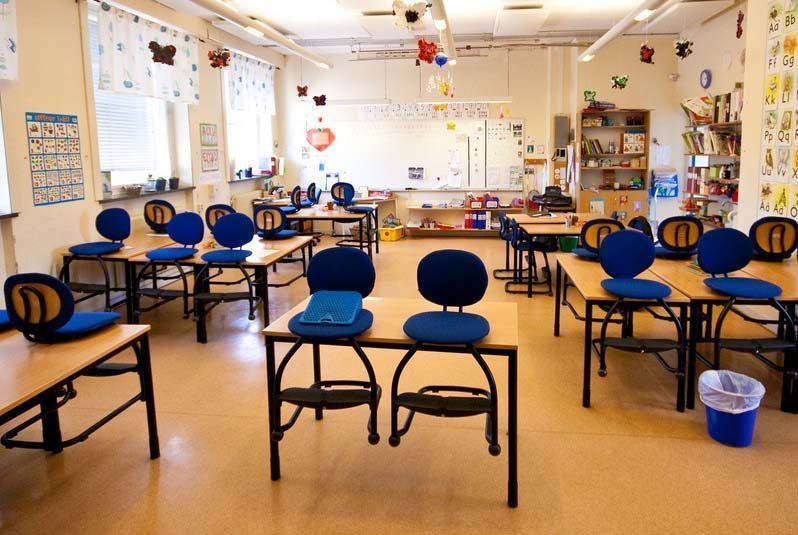
Though a number of new schools are expected to open in Qatar in the coming years, the country could face a shortage of some 19,000 spaces by 2022, according to a recent report.
In its latest overview of Doha’s education sector, real estate services firm Colliers International said Qatar must accelerate the pace of construction of new schools to tackle the shortfall.

There are currently some 262,200 students enrolled in kindergarten, primary, secondary and preparatory schools in Qatar, according to the country’s Supreme Education Council (SEC).
But with tuition rates controlled by the SEC and property prices continuing to rise, the business case for constructing a new school in Qatar can be a tough sell, Mansoor Ahmed, Colliers’ regional director of education, healthcare and public-private partnerships told Doha News.
“This is one of the main problems in Doha,” he said.
Ahmed said one solution is for the government to offer up discounted land to reduce the costs of starting a new school, which can currently run up to US$50 million. This would help attract more investors and operators, he said.
“Unless there is a change in policy where land is available at subsidized rate, there will be a shortage,” Ahmed said, adding that he’s heard anecdotally of private operators and developers being offered discounted land in Qatar but has not seen any formal policies.
Simple math
The prediction of a shortage comes despite Qatar adding an average of 16,000 new school spaces annually.

But at the same time, spaces for 17,400 new students – enough to fill eight to 12 schools – will be needed each year, assuming the population grows by 6 percent annually, Colliers stated.
That’s lower than the double-digit population growth rates Qatar has seen in recent years, but that may be because many of country’s newest residents are blue-collar workers moving here without their wives or children.
Still, as the frenetic pace of road, rail and stadium construction winds down and the 2022 World Cup draws closer, Qatar’s National Development Strategy envisions a shift in the characteristics of the country’s foreign workforce.
Specifically, officials want “a transition from the current low-skilled, low-productivity and low-wage economy to a high-skilled, high-productivity and high-wage economy.”
In Qatar, expats must earn a minimum monthly salary before they can sponsor family members. Attracting more high-income earners would, in theory, mean a high proportion of families in Qatar.
SEC efforts
To meet growing demand, authorities have announced plans to construct dozens of new schools across the country, with Ashghal saying it is currently overseeing education-related construction projects worth approximately QR3 billion (US$820 million).

Meanwhile, the SEC has made several announcements about the opening of new schools.
In addition to nine independent (state-run) schools – which primarily cater to Qatari students – the SEC said in February that 14 new Indian-curriculum schools and kindergartens would be opening. More recently, a senior official said nine new private schools, the majority of which would follow the British curriculum, would open last month.
However, there have been no follow-up details released on the names or locations of those facilities.
While many parents have said they’ve faced challenges in finding school spaces for their children, the SEC has there is an adequate number of schools for the country as a whole.
Still, while there may be a sufficient number of British and American schools, there continues to be a shortage of spaces in Indian, Syrian and Egyptian schools as well as for other curricula in some specific areas of the country.
Changing demographics
Colliers’ report, which is aimed at giving would-be investors an overview of Qatar’s education market, said demand for secondary school spaces in particular is set to rise over the next decade.
Currently, approximately 70 percent of all students are enrolled in pre-primary or primary grades, the firm says.

According to Colliers, that’s because many older students currently return to their home countries because of financial considerations and to ensure they’re eligible to enroll in the university of their choice.
But the real estate firm said that is expected to change as more expat families stay in Qatar for longer periods, due in part to many working on long-term infrastructure projects that involve lengthy contracts.
And, as more attractions and recreational facilities open, foreign workers are becoming more inclined to bring their families to Qatar, Ahmed said.
“The expat population is gradually considering Doha for a long-term stay, rather than a short-term stay.”
This means Qatar’s secondary school population will gradually rise, a trend Ahmed said has already occurred in Dubai.
Business case
Setting up a private school in Qatar isn’t cheap, with Colliers estimating that the initial development costs range between US$50 million and $100 million (QR182.11 million to QR364.21 million).

By comparison, Colliers said starting a new school in Dubai typically costs less – between $50 million and $75 million – due in large part to lower construction costs compared to Qatar.
Ahmed said that within the industry, land costs generally represent 10 to 15 percent of a new school’s price tag. But in Qatar, the figure is closer to 20 to 30 percent.
Construction makes up between half and 60 percent of the project’s capital cost, with the remainder going toward furniture and other fit-outs.
In addition to its capital-intensive nature, Colliers warned of other challenges. Schools must receive the SEC’s approval before increasing tuition fees, which has been difficult to obtain in recent years. And a shortage of skilled teachers means that recruiting and retaining staff can be a challenge, the firm added.
But for those who can overcome the obstacles, the education sector can be a lucrative investment.
Colliers said a well-run and high-quality international schools could have net profit margins of between 15 and 20 percent, which is higher than other real estate assets.
“The education market has become quite profitable,” Ahmed said.
Here’s a copy of the report:
Thoughts?







